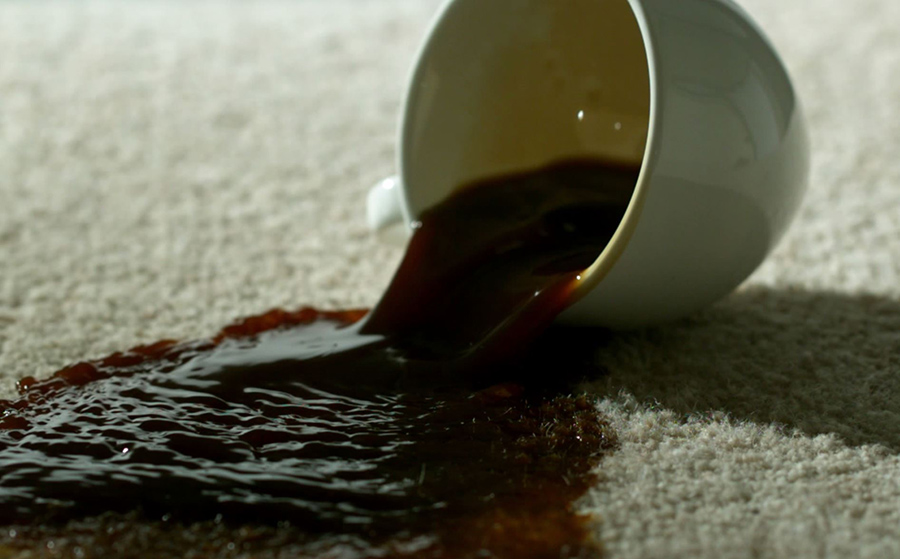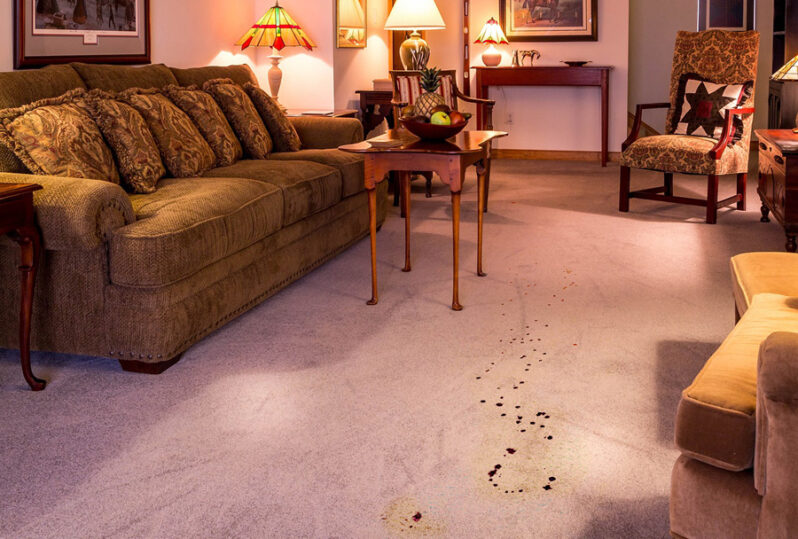What Is the Lifespan of Carpet?
The life expectancy of a carpet depends on how well it is cared for. You can expect a well-cared-for carpet to last 10 to 20 years. It is necessary to note, however, that there are many variables that affect the lifespan of a carpet. These variables include the type of material the carpet is made of, the traffic and activity in your home, as well as the quality of the fibers used.
Carpets that are made of nylon or polyester have the longest lifespan. These materials are also the most resilient. The ability of nylon or polyester carpets to resist wear and tear makes them ideal for high-traffic areas like hallways and living rooms. Nylon and polyester carpets can also tolerate elevated levels of foot traffic, making them great for busy households. On top of being resilient, these carpets are easy to clean using a vacuum, mild detergent, and warm water. They are also easy to stain-treat, so any spills or accidents can be easily removed without damaging the fiber. That said, even nylon and polyester carpets do not last forever. They will eventually begin to fray and get matted down.
For carpets in high-humidity areas, you may need to clean them more often to prevent mold and mildew. Make sure your carpet is completely dry after each cleaning. Consider using a dehumidifier if you live in a high-humidity area.
Extending Carpet’s Lifespan
One way to extend the life of your carpet is by using good-quality padding. This will reduce the surface friction of your carpet and will also help it maintain uniformity.
When it May Be Time to Consider New Carpet
You may need to replace your carpet if it has been over 15 years and has not been professionally serviced. Over time, filter soil, compression, and wear from heavy foot traffic will take a toll on the carpet. Sadly, carpets that have sustained structural damage, such as damage to the fibers and padding, cannot be repaired by cleaning.
In the end, we’re describing physical symptoms of carpets that indicate that it may be a good time to replace them. It is entirely up to you whether you replace your carpets or not. This decision will depend on your specific needs and circumstances as well as the condition of your carpets.
 Heavy Staining Over Time
Heavy Staining Over Time
With children and pets, it’s inevitable that staining will occur on the carpet. Whether it’s dirt, food, or pet accidents, stains can damage your carpet and leave an odor.
Regardless of the source, you should treat spots as soon as they occur to prevent permanent stains. You may not be able to remove the stain, but you can treat the affected area to reduce the odor for a few days.
Carpets can become a health hazard and cause respiratory issues if they aren’t replaced. When they’re more than 30 years old, they’re susceptible to mildew and mold. They can also hold dust, which can trigger allergies.
The best way to extend your carpet longevity is to perform a deep cleaning on them regularly.
Visual Signs of Substantial Wear and Tear
There are several telltale signs that indicate that your carpet is beginning to wear out. Below are visual cues that indicate they are worn out.
- Threads come loose when you barely pull on them.
- Large rips or holes appear in the carpet.
- The carpet is matting and tearing, as well as showing frayed edges.
- Discoloration of carpets may be a sign that they have been exposed to too much moisture over an extended period of time.
- Padding that has become thin or lumpy may indicate worn-out areas in your carpet.
Any signs of fraying or visible bald spots are an indication that the fibers are worn and missing. If this is happening in several areas, especially high foot traffic areas, this means the carpet has reached its lifespan.
A fading carpet is typically caused by exposure to sunlight. You can prevent this by closing blinds or curtains in the affected area.
Lumpy or Wrinkled Worn Out Padding
Eventually, the carpet will begin to thin and become brittle due to everyday wear and tear. It depends on household size and activity how quickly the fibers start to break down and fray. As fibers deteriorate or fray, because of foot traffic and friction, the carpet will become thinner and less plush. As more fibers break, you will begin to see more matting in high-traffic areas. It can also feel crunchy to the touch. It is possible to replace the padding and not the carpet, but you should speak with a professional carpet installer about your options.
The padding is the foundation of your carpet. It acts as a sound barrier, absorbs spills, and provides support for your carpet. Unfortunately, there are situations where the carpet is of a high grade, but the padding is not. In these cases, the padding may wear out before the carpet does.
The padding can be made of a wide variety of materials and varying quality. Depending on the type of carpet you have, thicker padding isn’t always the best choice. You will want to use the recommended padding thickness that the carpet manufacturer suggests to prevent premature wearing.
 Irreversible Water Damage and Molds
Irreversible Water Damage and Molds
Whether you are dealing with a storm or an appliance malfunction, water damage and mold in the carpet can create a dangerous environment. Fortunately, there are steps that can be taken to prevent these health hazards from occurring. If your carpet has been exposed to excessive moisture, it is imperative that you remove it as soon as possible. The longer water is allowed to soak into the carpet and padding, the greater the damage it will do.
If excess moisture exposure is not remedied within 72 hours, the damage may be irreversible.
If you notice any signs of mold or mildew on the carpet after water damage, you should contact a water damage restoration company as soon as possible.
Inhaling mold can cause several health problems, including shortness of breath, coughing, headaches, and fatigue. Mold grows in areas with excess moisture.
Heavy Fading Due to Sun Bleaching
Our homes are exposed to the sun’s ultraviolet (UV) rays, which can be damaging. Thankfully, we can take a few measures to minimize the damage.
Heavy fading on carpets due to sun bleaching is a common problem, especially in homes located in parts of the world with prolonged sunlight. Sun bleaching happens when intense ultraviolet (UV) radiation from the sun damages the dyes of carpets, resulting in the fading of color. Exposure to direct sunlight for an extended period of time is the key factor that contributes to heavy fading on carpets. As a result, your carpet, upholstered sofa, or armchair can lose its vibrant colors. To counter this, you should consider rearranging your furniture and floor coverings to prevent extended sun exposure. One option is to install blackout shades to protect your interior from the elements.
Another option is to install thick curtains to keep the glare off your interior.
Although direct and prolonged sunlight exposure is generally the culprit for fading carpets, there are other factors that can contribute to fading such as improper care guidelines or the use of solvent-based dyes.
Consider purchasing a carpet with a high-performance fade resistance rating if you are in the market for new carpet.
Heavy Pet Odor
Especially in carpets, animal urine is most noticeable by the strong smell of ammonia. Although all urine has some ammonia in it, cat urine contains a higher concentration.
Pet Food and Water: Whether it’s accidental or intentional, pets may spill food or water on the carpet. Spills of food, dirt, and hair can easily get ground into carpets, leading to an unpleasant odor. Immediately spot-clean after any spills, making sure to blot from the edges to the center – never the other way around.
Accidents: Accidents are inevitable when it comes to having a pet who’s still in the housetraining process. It’s important to act quickly when this happens – blot the affected area with a dry cloth, then use baking soda or an animal-friendly cleaning solution for spot-cleaning.
Pet Dander: Shedding pets can also lead to unpleasant odors from pet dander, which is a mixture of fur and dead skin cells. Regular brushing and vacuuming your pet will help eliminate this issue.
Routine Professional Carpet Cleaning: If all else fails, professional carpet cleaning is the best option to remove pet odors from carpets. Best Way Carpet Cleaning has the experience and resources to tackle the toughest pet odors.
Worst Case Scenario: There comes a time when no amount of professional carpet cleaning is going to make the carpet smell better. This is because the pet’s urine and/or feces have reached down into the padding, even down into the subflooring. When this happens, the only remedy is to replace the carpet and padding.
Your Current Carpet Is Not in Good Shape, but You’re Not Ready to Replace It Yet. What Now?
Having old carpet can be a real eye sore but there are a few things you can do about it. Replacing them can be costly, requiring a budget where the timing for it might not be best. There are several ways to improve your living space without breaking the bank. In addition to extending the life of your carpet, regular vacuuming and steam cleaning can keep it cleaner and fresher for a longer period. Carpet patches can be used to cover up burns, worn spots, and holes without replacing the entire carpet. You may wish to use an area rug to cover up heavy staining or worn spots, while adding texture and pattern to the room. If you would like to have your carpets professionally cleaned, contact Best Way Carpet Cleaning. We’d be happy to discuss your options.



